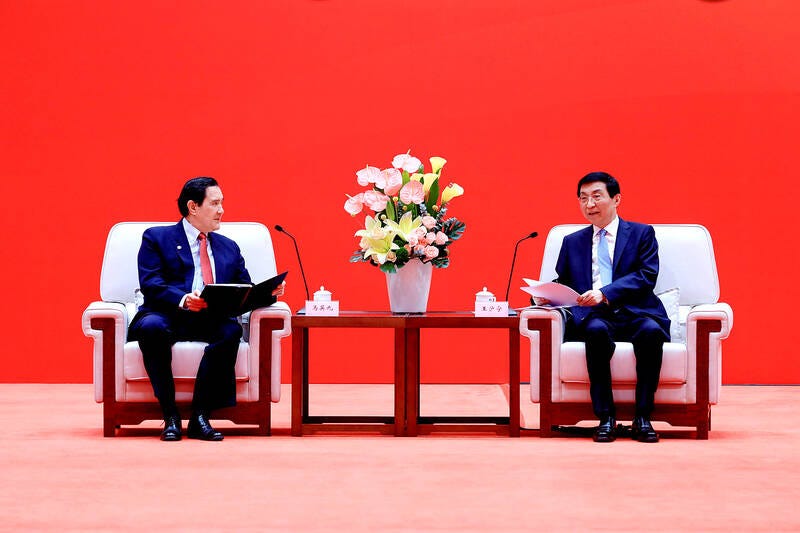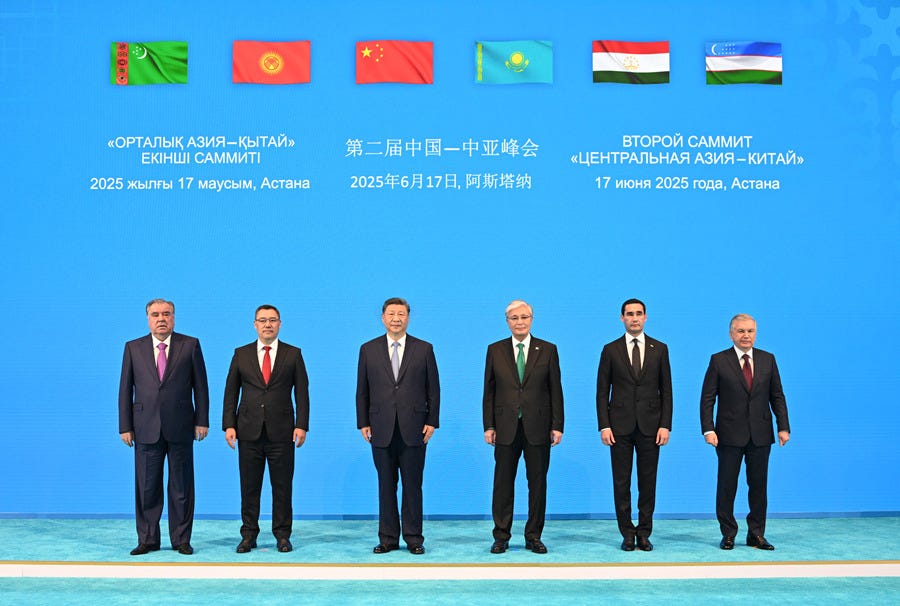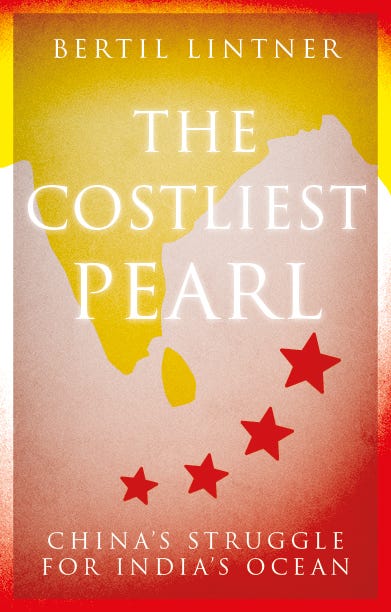Dreams, Deals and Declarations!
From political theatre in the Taiwan Strait to bold steps toward the Moon, this week’s developments reveal how China is quietly but decisively reshaping its role on the world stage.
The Tianxian View is the Pune International Centre’s (PIC) weekly newsletter on China. Each week, we bring you handpicked insights into the key developments shaping China’s politics, economy, defence, foreign policy, technology and climate.
This week’s edition captures China in motion — stirring tensions across the Strait, deepening ties in Central Asia, and reaching for the Moon. As Beijing flexes both soft and hard power, the signals are impossible to ignore. We unpack key developments shaping China’s next steps — and round off with a thought-provoking book recommendation you won’t want to miss.
Beijing Watch: Politics & Governance
Dancing with Beijing? The Politics of the 17th Straits Forum
The 17th Straits Forum took place on 15th June 2025 in Xiamen, a city in China’s Fujian Province. The forum was attended by Wang Huning (王滬寧), a member of the Politburo Standing Committee of the Central Committee of the Communist Party of China (CPC) and Chairman of the National Committee of the Chinese People’s Political Consultative Conference. Wang underlined China’s long-standing aspiration for the national rejuvenation of Mainland China together with Taiwan.
What is the 17th Straits Forum really about?
The 17th Straits Forum is an annual event aimed at promoting cross-strait relations and cooperation between the People’s Republic of China and the Republic of China (Taiwan). However, the present Taiwanese government, led by the Democratic Progressive Party (DPP), views the forum as Beijing’s tool to promote its ‘One China’ principle and vision of peaceful reunification with Taiwan. In his speech, Wang asserted that the recovery of Taiwan is a national memory and a shared glory of the Chinese people.

For the first time in 17 years, Kuomintang (KMT) leaders attended the forum, including Ma Ying-jeou (馬英九), former President of the Republic of China (Taiwan). Ma participated in the forum as the former chairperson of the KMT and reaffirmed his support for the 1992 Consensus reached between the then-ruling KMT government in Taiwan and the Chinese Communist Party. He also expressed opposition to pro-independence forces in Taiwan. While condemning Ma’s remarks in response, the DPP government has accused him of ‘dancing with Beijing.’ The forum’s emphasis on the 1992 Consensus and Ma’s participation has strengthened Beijing’s narrative of undermining the DPP’s pro-independence stance. However, it may further polarise Taiwanese politics and strain cross-strait relations in the lead-up to future elections.
Dragon’s Ledger: Economy
China’s Retail Surge Masks Deeper Economic Challenges
Retail sales in China surged by 6.4% year-on-year in May — the fastest increase since December 2023. The surge in short-term consumption resulted from a trifecta of state subsidies, the promotion of e-commerce, and rising tourism. The ‘trade-in’ subsidy programme remained one of the key contributors to this short-term boost.
What is the ‘trade-in’ subsidy programme?
As part of the trade-in subsidy programme, people can exchange old appliances and receive discounts on newer models. This time, it accounted for nearly a third of sales and encouraged spending in the face of economic uncertainty. In addition to the trade-in scheme, the 618 mid-year shopping festival also contributed to the consumption leap. After Singles’ Day, the 618 festival has become China’s second-largest shopping event. It runs from 1st to 18th June; however, its positive economic effects tend to be short-lived.
Despite the increase in retail sales, China’s property sector has worsened as investment in infrastructure and construction has declined. Furthermore, youth unemployment remains high, and local governments struggle to fund subsidy programmes due to limited financial resources. The durability of consumer spending remains uncertain amidst the lack of support from local governments and the fading impact of the 618 festival.

While the country has an array of policies it can deploy, it appears reluctant to implement them unless economic growth falls below 4.5%. For now, optimism and inertia seem to be Beijing’s tools of choice.
Beyond the Wall: Foreign Policy
The Heart of Eurasia Beats Stronger with China
The second China-Central Asia Summit was held in Astana, Kazakhstan, from 16th to 18th June 2025. The summit brought together the heads of the People’s Republic of China (PRC) and the five Central Asian nations — Kazakhstan, Kyrgyzstan, Tajikistan, Turkmenistan, and Uzbekistan. President Xi Jinping introduced the concept of the ‘China-Central Asia Spirit,’ emphasising mutual trust and joint efforts towards modernisation.
Summit Outcomes:
Adoption of the Astana Declaration and a Treaty of Permanent Good-Neighbourliness
Signing 12 cooperation agreements in trade, infrastructure, green minerals, and customs
Central Asian countries reiterated support for the ‘One-China Principle,’ opposing all forms of ‘Taiwan independence’
China announced a 1.5 billion yuan (approx. US$208 million) grant to fund public welfare and development projects
Designation of 2025–2026 as the ‘Year of High-Quality Cooperation and Development’ to ensure measurable progress

Central Asia is significant for Beijing from trade, connectivity, and energy cooperation perspectives. It is a strategic transport corridor for the Belt and Road Initiative (BRI). By offering land-based routes, it reduces China’s reliance on maritime routes such as the Malacca Strait. The region is not only a vital source of oil, gas, and critical minerals for China but also acts as a buffer against extremism and separatist movements, including Uyghur militancy in Xinjiang. Infrastructural projects such as the China-Europe freight train and the China-Kyrgyzstan-Uzbekistan Railway have deepened integration between China and Central Asia. Such projects underscore their shared commitment to development and regional security.
Techscape China: Space Briefing
China’s ‘Dream Boat’ Defies Gravity in High-Stakes Lunar Trial
China successfully carried out a critical zero-altitude escape flight test of its new-generation ‘Mengzhou’ (梦舟), meaning ‘Dream Boat,’ manned spacecraft on 17th June. The test was conducted at the Jiuquan Satellite Launch Centre by the China Manned Space Engineering Office. The last such test of a manned spacecraft, named Shenzhou (神舟), was conducted in 1998.
Key Features of the ‘Mengzhou’ (梦舟) Spacecraft
Integrates escape and rescue functions into the spacecraft system — a shift from the Shenzhou-era model.
Escape and life-saving subsystems were tested under real flight conditions.
Designed with a modular structure, capable of carrying up to seven astronauts.
Incorporates advanced escape timing, trajectory control, and safety measures.
Achieves performance levels on par with international spacecraft standards.

This successful test marks a significant leap in China’s manned lunar ambitions. It reaffirms the country’s capabilities in human spaceflight safety and technology. The Mengzhou spacecraft is set to become the backbone of China’s future manned missions, including space station operations and lunar landings. Alongside the development of the Long March 10 rocket and a new lunar lander, this mission strengthens China’s roadmap towards becoming a major space power.
Book Recommendation: The Costliest Pearl by Bertil Lintener
The Costliest Pearl portrays China’s quest for power in the Indian Ocean region. From port developments and naval deployments to the BRI, Lintener analyses China’s expanding influence in a region that India has long considered its own backyard. The author brings to light the strategic significance of island nations such as Sri Lanka and the Maldives and their role in the emerging power struggle. The book also explains why the IOR could be more volatile than the South China Sea in light of weaker alliances, fragile democracies, and internal instability among these island nations. The author further argues that Beijing’s actions are part of a long-term plan to replace American influence and challenge India’s naval dominance. Guided by both historical and contemporary evidence, the book serves as a wake-up call for those interested in maritime security and Indo-Pacific dynamics.
The Tianxian View is an initiative of the Pune International Centre (PIC), an independent and multidimensional policy think tank based in Pune, India. This newsletter aims to offer clear, contextual insights into China’s evolving trajectory.
To know more about PIC’s work and upcoming initiatives, follow us on our website and social media handles.
AI Disclosure Statement: Select Mandarin-to-English translations in this newsletter were produced using advanced large language models (LLMs), applying artificial intelligence and machine learning techniques for natural language processing.





